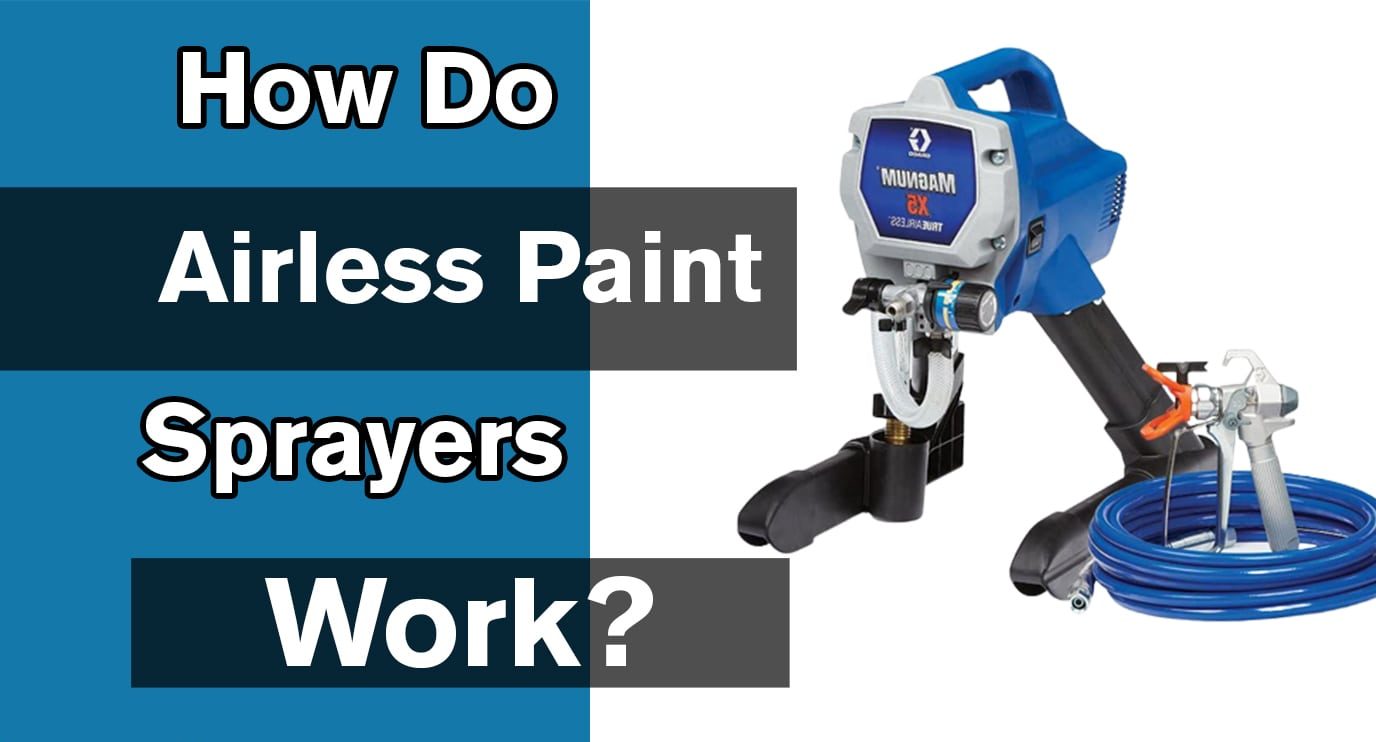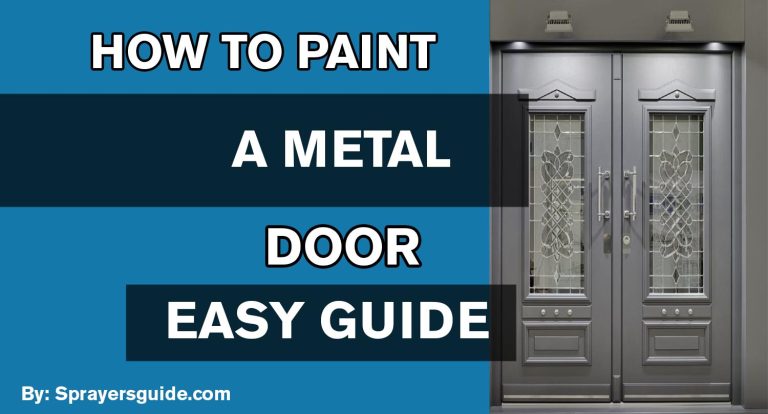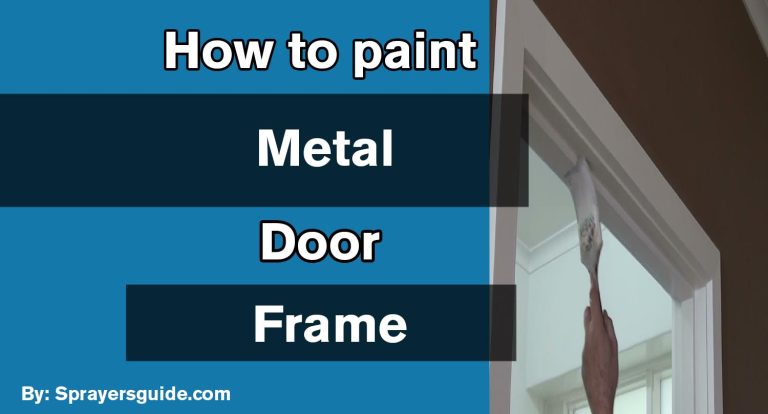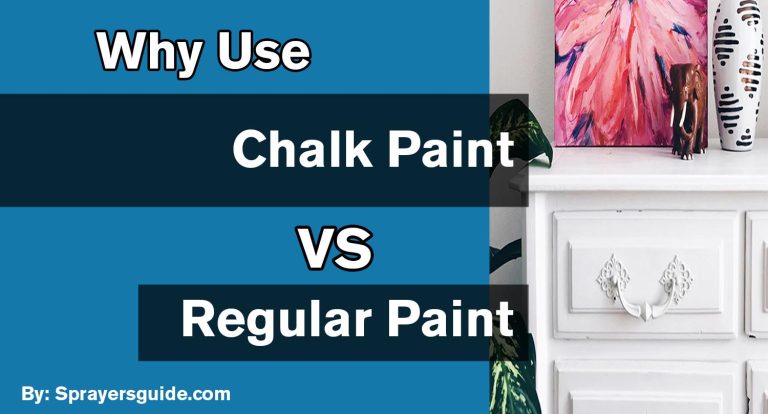Airless sprayers are paint sprayers that do not use compressed air to spread paint on a surface. They are becoming more popular because they are more environmentally friendly and save time by eliminating the need for the user to wait for the compressor to refill the air tank. When using an airless paint sprayer, remember a few things.
Painters use an airless paint sprayer when they need to work quickly. Coatings are pumped into these sprayers through a small hole in the tip, using less air and less paint. This is helpful when you need to finish a task quickly. This method applies to any paint but is especially useful when working with quick-drying coatings such as lacquers.

Why Should You Choose Airless Spray Technology?
For a long time, using a sprayer required a compressor similar to the ones used to paint cars today. You couldn’t move around much with them because they were large, heavy, and expensive. To finish your work, you had to stay in one place.
An airless paint sprayer is wonderful because it is easy to move around and uses a piston to force paint out of the sprayer. This means there is no need for an external compressor, making the sprayer more portable and easier to use.
Additionally, airless paint sprayers are less noisy than traditional paint sprayers, making them a great choice for jobs where discretion is important.
There are many different types of airless sprayers on the market, each with its purpose, set of requirements, or product. When it comes to commercial painting, there are numerous options. However, before examining each one, we must understand how they work.
A huge variety of airless paint sprayers are on the market, each designed for a specific purpose, set of requirements, or product type. Airless sprayers are great for painting various surfaces, including wood, plastic, metal, etc. They are also ideal for people who want to paint in tight spaces, such as bathrooms or closets.
Choosing the right airless paint sprayer can be confusing, but with a little research, you’ll find the perfect one for your needs. Here are some simple tips to help you choose the best airless paint sprayer for your requirements:
1. Cost:
An airless paint sprayer is available online for between $70 and $200. It is a useful tool for any painter. Finding a brand and model that meets your demands and budget is important, as there are multiple choices.
2. Size:
Airless paint sprayers come in all shapes and sizes. Some are small enough to fit in a toolbox, while others are large enough to require a dedicated stand. Please choose the right airless paint sprayer for your needs by considering its size and weight.
3. Speed:
An airless paint sprayer is a tool that can speed up the painting process on large surfaces. With an airless paint sprayer, you can paint a large surface in a much shorter time than with a brush or roller. The benefits of using an airless paint sprayer over traditional methods are speed, accuracy, and ease of use.
4. Features
Standard features:
- Spray tip
- Spray tip guard
- Prime pump/spray knob
- Sprayer Trigger
- Paint cup
- Power cord
5. Protection
When not using the paint sprayer, ensure the trigger is locked. While cleaning or doing maintenance, ensure the trigger is closed so you don’t get hurt if the paint leaks out by accident.
You should always wear safety glasses and a face mask during airless paint spraying.
When using an airless paint sprayer, the risk of chemical exposure is high, so follow the manufacturer’s safety guidelines.
Always use a proper ventilation system when using an airless paint sprayer; otherwise, you may expose yourself to harmful fumes.
How Does an Airless Paint Sprayer Work?
When you’re painting a wall, ceiling, or any other surface using an airless paint sprayer, the goal is to get a fine mist of paint on the surface. The sprayer uses a piston pump to push air through a small nozzle into the paint can.
This creates a high-pressure stream of air that atomizes the paint and causes it to shoot out in a fine mist. Most airless paint sprayers, like automobiles, employ a piston and cylinder. The piston is raised and lowered by an electric motor. This cycle permits an internal pressure of approximately 100 psi.
The electric motor operates at 1,250 rpm and creates a pressurized stream of paint directed at the object to be painted.
- Paint spraying is a process that uses pressurized air to atomize paint and create a fine mist.
- This mist is directed at a target surface using an airless spray cannon.
- The high pressure of the airless spray gun forces the paint droplets through a narrow nozzle, resulting in a fine and even spray pattern.
- Pumps are used to increase the pressure of the paint to up to 250 bar before it goes through an airless spray cannon.
Pros:
- A high-pressure airless paint sprayer can cover a large area much faster than a roller or brush because it doesn’t require air. This paint sprayer is ideal for bigger jobs like painting a whole room or ceiling.
- Airless paint sprayers have recently become popular for their ease of use and convenience and are often preferred over other painting techniques, such as rollers or brushes. On the other hand, getting used to an airless paint sprayer can be difficult at first.
- If you’re painting wood, airless paint sprayers give a superb glass-like surface.
Cons:
Every great product, it seems, comes. There is no denying that every great product has some drawbacks.
- An airless paint sprayer can be a great investment for those who love to paint but are frustrated by the amount of paint that leaks out of the outlet and vanishes into thin air. Between 10 and 15% of the paint is wasted with an airless paint sprayer, compared to over 50% with a traditional sprayer.
- Some people may find it difficult to keep an airless paint sprayer in good working order. Cleaning up after using an airless paint sprayer requires additional procedures.
Frequently Asked Questions:
People often use airless paint sprayers, but on average, they waste more paint than other types of sprayers. Standard airless paint sprayers can waste up to 30% of the paint used, which can be costly. There are a few ways that airless paint sprayers can be used more efficiently. One way is to use a higher-quality paint unaffected by humidity or weather conditions.
Airless paint sprayers are great for painting big areas because their higher operating speeds allow them to cover more surfaces in less time.
Airless sprayers are designed to work with various materials, including standard latex paints, enamels, primers, stains, sealants, and lacquers. When choosing the right type of paint for your project, it’s important to consider the material being painted and any recommended thinner or primer necessary for proper adhesion.
Airless paint spraying offers many benefits over traditional brush painting methods: It requires less preparation time, applies more consistent coats, covers large surfaces faster, and delivers a superior finish. It is also less labor-intensive and more cost-effective than traditional brush painting, making it an ideal choice for large projects.
Conclusion:
In conclusion, airless paint sprayers are popular for beginners and professionals due to their quick, better, and more efficient painting. They’re simple to use, lightweight, and convenient, making them a great option for any painter. If you’re looking for an efficient and quick way to paint your projects, an airless paint sprayer is the best choice!
Read More:
- How Long Does Primer Spray Paint Take To Dry
- How To Thin Water-Based Paint For Roller
- How Long Does Spray Paint Take To Dry Metal
- Is It Better To Spray Or Roll the Interior Paint
- Does A Paint Sprayer Use More Paint Than A Roller
- How To Thin Water-Based Paint For Spraying
- How To Clean Wagner 350 Paint Sprayer
- How To Paint A Textured Ceiling With A Roller
- Which Is Better, Air Or Airless Paint Sprayer
- How To Use Hvlp Spray Gun
- How Long Does Spray Paint Take To Dry On Cardboard
- Graco Magnum Prox17 VS X5






